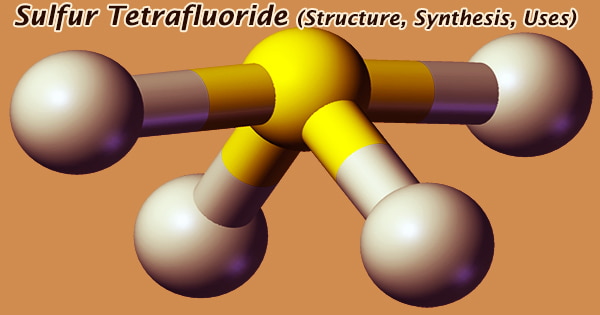Background of the Term Paper
This Term paper entitled “Organizational Structure in My Organization: A Critical Review” is a fundamental requirement for the completion of the course ETHM-505. The main purpose of this term paper is to relate the issues covered in this course with the activities of my organization and to extract information of the organizational structure using both the primary and secondary sources of information. Under the instruction and guidance of the course instructor Professor Muhammad Mohiuddin, I have taken the initiative to prepare this term paper with much precision and by being completely unbiased. This term paper was prepared for fulfilling the requirement of Fundamentals of Management (ETHM-505) course. The work started as assigned by the honorable Course Instructor. It took about two weeks to finish.
Objectives
The general objective of this term paper is to provide a synopsis of the Organizational Structure in My Organization: A Critical Review related to ETHM – 505. It is also required for the completion of this course. Beside the general objective, the objectives behind this term paper are given below:
Main Objectives
The primary objective of the term paper is—
- To analyze on the issue Organizational Structure in My Organization.
- To disclose the precise scenario of the ‘Organizational Structure in My Organization’.
- To analyze and recommend on the mentioned issues.
Specific Objectives
The secondary objectives to prepare this term paper is—
- To fulfill the requirements of my course ETHM-505.
- To Relate Organizational Structure in My Organization with the issues covered in my course.
- To gather experience and knowledge of preparing a professional term paper.
Scope of the Term Paper
This research study will cover the topic “Organizational Structure in My Organization: A Critical Review” and its related issues. It also includes recommendations against the selected issues. This term paper can be used as a secondary source for further purposes.
Sources of Information
To fulfill the objective of this term paper collection of relevant, accurate, standardized and needful information was required. To make this term paper reliable I have collected data from secondary sources. The whole term paper is prepared based on secondary sources. That is why there is no primary source. Special consideration was given so that chances of biasness could not arise.
Primary Source
Primary sources are original materials on which other research is based. I have collected my information by talking with the owners and employees of my organization. I have also conducted some customer surveys to experts. From those surveys, I got some information that has helped in preparing this term paper.
Secondary Sources
Secondary sources are those, which simplify the process of finding and evaluating the primary literature. Secondary data may be available which is entirely appropriate and wholly adequate to draw conclusions and answer the question or solve the problem.
To know exactly how to prepare the term paper, I have referred different secondary sources. Secondary sources were consulted for an understanding of techniques of writing feasibility studies and for other relevant information. Few publications and web pages were also browsed.
I have also collected my data from the following secondary sources:
- bibliographies
- biographical works
- commentaries
- dictionaries and encyclopedias
- handbooks and data compilations
- history
Methodology
This term paper covers the different aspects and activities that are required to make a term paper on ‘Organizational Structure in My Organization: A Critical Review’. However, the term paper is prepared based upon the information collected from primary and secondary sources. The findings are strictly structured upon information provided by these sources and some secondary sources. The focus here is on presentation of facts as discovered.
The methods that I followed to prepare the term paper are as follows:
- At first I took the main issues studied in this course.
- Related the issues studied with my organizational structure.
- Studied several books, articles, newspapers, and other secondary sources.
- Collected information related to this term paper and the topic.
- I have discussed with my honorable course instructor.
Limitation
No study is beyond any limitations. While doing this research study I had to face some difficulties. The limitations of the research activities are as follows—
- I did not have so much experience for conducting research and preparing the term paper very frequently, though I am in learning position.
- There was lack of precise information;
- There was not enough time to analyze the selected issues.
- My resources were limited. So, it was hard for me to prepare a professional term paper with my limited resources.
- It was very hard to get the real information, which was needed to explore the current situation
- I do have a little experience of writing this type of Term Paper. That is why I faced some problems while preparing it.
Organizing
Definition
- “Organizing is deciding how best to group organizational elements” – Ricky W. Griffin
- “Organizing is the structuring of a coordinated system of authority relationships and task responsibilities.” – Robert Kreitner
Organizing Process
- Establish organizational objectives
- Formulate supporting objectives, policies and plans.
- Design jobs for people within the organization
- Group jobs
- Establish reporting relationships between jobs
- Distribute authority among jobs
- Coordinate activities between jobs
- Differentiate positions
- Tie groups together horizontally& vertically through authority relationships and information flow
Principles of Organizing
- Principle of unity of objective
- Principle of organizational efficiency
- Principle of unity of command
- Principle of absoluteness of responsibility
- Principle of parity of authority and responsibility
- Principle of delegation by results expected
- Principle of balance
- Principle of flexibility
- Principle of leadership facilitation
- Principle of functional definition
- Principle of scalar chain
- Principle of division of authority relationships of work and information flow
Departmentation
Concept
Departmentation is dividing or grouping the jobs of the organization in some logical manner.
Bases
- Function: – Grouping the jobs of the organization on the basis homogeneous functions. E.g. marketing, production etc.
- Product: – Grouping activities around products or product groups. E.g. Square – pharmaceuticals, textile, toiletries etc.
- Process: – Based on stages of a process of production. E.g. Textile process: spinning, knitting, dyeing.
- Location/Territory: – Grouping jobs on the basis of defined geographic sites or areas. (E.g. Dhaka, Chittagong, Khulna etc.)
- Time: – 24 hours service like in hotel and hospital. Morning shift, day shift, night shift etc.
- Customer: – Grouping activities to respond to and interact with specific customers or customer groups. On the basis of client characteristics. E.g. airlines industry – business, executive, and economic class.
Why do we do Departmentation?
- Expansion of size of operation
- Facilitate job specialization i.e. develop expertise
- Achieving efficiency
- Cost reduction
- Consideration of local condition
- Facilitate control
- Facilitate coordination
Organization Structure
Organization structure is the authority relationship among people working in the organization. It is the establishment of relationships between and among the divided parts of the organization.
Organization chart is the graphical presentation of the organizational structure. It is the line diagram that depicts the relationships between positions in an organization.
One of the most challenging tasks of a business may be organizing the people who perform its work. A business may begin with one person doing all the necessary tasks. As the business becomes successful and grows, however, there is generally more work, and more people are needed to perform various tasks. Through this division of work, individuals can become specialists at a specific job. Because there are several people—often in different locations—working toward a common objective, “there must be a plan showing how the work will be organized. The plan for the systematic arrangement of work is the organization structure. Organization structure is comprised of functions, relationships, responsibilities, authorities, and communications of individuals within each department” (Sexton, 1970, p. 23). The typical depiction of structure is the organizational chart. The formalized organizational chart has been around since 1854, when Daniel McCallum became general superintendent of the New York and Erie Railroad—one of the world’s longest railroads. According to McCallum, since the railroad was one of the longest, the operating costs per mile should be less than those of shorter railroad lines. However, this was not the case. To remedy management inefficiencies, McCallum designed the first organizational chart in order to create a sense of structure. The organizational chart has been described as looking like a tree, with the roots representing the president and the board of directors, while the branches symbolize the various departments and the leaves depict the staff workers. The result of the organizational chart was a clear line of authority showing where subordinates were accountable to their immediate supervisors (Chandler, 1988, p. 156).
Types of Organization Structure
1.Line/Military Organization —-The relationship in which a superior exercises direct supervision over a subordinate. The line structure is defined by its clear chain of command, with final approval on decisions affecting the operations of the company still coming from the top down. Because the line structure is most often used in small organizations—such as small accounting offices and law firms, hair salons, and “mom-and-pop” stores—the president or CEO can easily provide information and direction to subordinates, thus allowing decisions to be made quickly (Boone and Kurtz, 1993, p. 259).
Line structures by nature are fairly informal and involve few departments, making the organizations highly decentralized. Employees are generally on a first-name basis with the president, who is often available throughout the day to answer questions and/or to respond to situations as they arise. It is common to see the president or CEO working alongside the subordinates. Because the president is often responsible for wearing many “hats” and being responsible for many activities, she or he cannot be an expert in all areas.
2.Line and Staff organization –— The nature of staff relationship is advisory. The function of people in a pure staff capacity is to investigate, research, and give advice to line managers. While the line structure would not be appropriate for larger companies, the line-and-staff structure is applicable because it helps to identify a set of guidelines for the people directly involved in completing the organization’s work. This type of structure combines the flow of information from the line structure with the staff departments that service, advice, and support them (Boone and Kurtz, 1993, p. 259).
Line departments are involved in making decisions regarding the operation of the organization, while staff areas provide specialized support. The line-and-staff organizational structure “is necessary to provide specialized, functional assistance to all managers, to ensure adequate checks and balances, and to maintain accountability for end results” (Allen, 1970, p. 63).
An example of a line department might be the production department because it is directly responsible for producing the product. A staff department, on the other hand, has employees who advise and assist—making sure the product gets advertised or that the customer service representative’s computer is working (Boone and Kurtz, 1993, p. 259).
3.Functional Organization (by F. w. Taylor) — The right delegated to an individual or a department to control specified processes, practices, policies or other matters relating to activities undertaken by persons in other department. When a staff unit exercises command authority over specific matters relating to some aspect of line functions, it creates a functional structure. A functional structure is also created when the corporate executives exercise functional control over there respective counterparts in the semi-autonomous divisions of the company.
4.Matrix – An organizational structure that assigns specialists from different functional departments to work on one or more projects. A variation of the line-and-staff organizational structure is the matrix structure. In today’s workplace, employees are hired into a functional department (a department that performs a specific type of work, such as marketing, finance, accounting, and human resources) but may find themselves working on projects managed by members of another department. Organizations arranged according to project are referred to as matrix organizations. Matrix organizations combine both vertical authority relationships (where employees report to their functional manager) and horizontal, or diagonal, work relationships (where employees report to their project supervisor for the length of the project). “Workers are accountable to two supervisors—one functional manger in the department where the employee regularly works and one special project manager who uses the employee’s services for a varying period of time” (Keeling and Kallaus, 1996,p. 43).
Since employees report to two separate managers, this type of organizational structure is difficult to manage—especially because of conflicting roles and shared authority. Employees’ time is often split between departments and they can become easily frustrated if each manager requires extra efforts to complete projects on similar time-lines.
Because the matrix structure is often used in organizations using the line-and-staff setup, its also fairly centralized. However, the chain of command is different in that an employee can report to one or more managers, but one manager typically has more authority over the employee than the other manager(s). Within the project or team unit, decision making can occur faster than in a line-and-staff structure, but probably not as quickly as in a line structure. Typically, the matrix structure is more informal than line-and-staff structures but not as informal as line structures
Delegation of Authority
Concept
Delegation of authority is the process of granting the authority (power) to subordinate positions to perform a given task or to take decision about specific matters. It is a process to assign tasks to subordinates to perform.
Delegation Process
- Determine the results expected from the subordinates.
- Assign tasks to subordinates
- Delegate authority to perform the given task properly
- Create accountability for the subordinates. It is making subordinates obliged to do the given job.
When will one delegate?
- Overburden situations
- Complex job that needs extra analysis (or time)
- Unique knowledge or skill required
- Local situation
Why do people not delegate?
- Believe in the fallacy, “If you want it done right, do it yourself”
- Lack of confidence and trust on subordinates.
- Low self-confidence
- Vague job description
- Lack of control mechanism to provide early signals of problems with given job.
- Fear of being called ‘lazy’
- Fear of competition from subordinates.
- Reluctant to take the risk involved in depending on others.
How to relieve an overburden executive?
- By giving an assistant.
- Creating parallel/horizontal subordinate position
- Creating extra layer
- Consultant hiring
Centralization of Authority
Definition
Centralization is the process of systematically retaining power and authority in the hands of higher level managers. — R. W. Griffin
Where Centralization is Beneficial?
- Uniformity of actions are necessary
- Integration and coordination of the tasks are significant for the success of the firm
- Emergency situations
- Where significant allocation of resources are needed
- Where cost of failure is high for the organization
- Size of firm is small
Decentralization of Authority
Definition
Decentralization refers to a high degree of delegation of decision making authority along with responsibility to certain position of organization.
Favorable Factors Affecting Decentralization
- Local situation is to be incorporated into decision
- Availability of quality managers
- Management philosophy
- Size and character of the organization is large and research oriented
- Effective control mechanism exists
- Desire for independence of subordinates
- Task is geographically dislocated
- Cost of mistake is insignificant
Principles of Delegation
- Principle of avoiding dual subordination
- Principle of parity of authority and responsibility
- Principle of absoluteness of responsibility:
- Principle of involvement of subordinates.
- Principle of definition of authority and task
- Principle of adequate control
Span of Control
Concept
Span of control and supervision refers to the numbers of subordinates an executive can effectively control/supervise.
Relations to be maintained with the people by an executive
- Direct relations
- Cross relations
- Group relations
Factors Determining Optimum Span of Control
- Level of skill and expertise of the executive
- Level of skill and expertise of the subordinate
- Geographical distance with the subordinates
- Complexity of the supervisory work
- Time and energy of the supervisor
- Frequency of new problems.
- Similarity of task supervised
- Extent of standardized procedure
Success lies in the ability to adapt with changing times. That is something Diamond Valley Homes Ltd wants to use as its strategy to anticipate that change and mould its services to meet the needs of its valuable clients.
Diamond Valley Homes Limited (DVHL) is a new and small company with little experience in the Property & Land business, and has enough connections with many of the most successful architects, planning specialists and other property and Land professionals in its one year journey.
The basic demand of a civil citizen is food, shelter, clothes and medicine. But considering the present scenario shelter is the main problem to all of us. Dhaka is now one of the fast growing and densely populated metro-city in the world. It has been an unplanned city with disorganized facilities for residents. But there should be a change; it is the demand of time. And the change maker is going to be none other than Diamond Valley Homes Limited.
We are committed to providing our customers with quality, affordable Lands. We visit all of our Lands to ensure accuracy in the descriptions we provide.
We are delighted to offer to people the lands we currently have available. We strive after 100% customer satisfaction. We achieve this by personal and individual customer treatment. We will assist our customers with thinkable help during the whole buying process.
Our business has been around for one year. However, our team is young and ambitious. We continuously grow, innovate, and reinvent ourselves. We take pride in what we do and it is always a pleasure for us to serve our customers.
Mission Statement
“Our mission is to be the leading provider of land development solutions today and tomorrow by building on our strong foundation of integrity and on our commitment to associates, clients, and communities. Our commitment is to preserve the natural beauty of the environment and generate economic growth for the area.”
Vision Statement
”With ethics and integrity, DVHL strives for excellence in all facets of Land Development services in order to enhance our position as an industry leader.”
Project
There is only one project DVHL currently has and the name of this project is GulshanDestinyValley.
GulshanDestinyValley will be the most planned modern city where one can get all the facilities for a better and comfortable lifestyle for him and as well as his future generation. DVHL will design this model city with all best standard facilities for the peace lovers. Being the member of the metro-city, we offer a futuristic living plots within the most suitable location in Dhaka City that gives people natural fresh environment, broad roads and lanes, power, water, IT communication, club, college, corner shop, hospitals, katcha bazaar, lake, mosque, school, park, and round the clock security facility to make our life peaceful and happy.
As I have mentioned above that the DVHL is a small and new company in this industry, the organizational structure (organogram) is also very small. The organogram is ‘unstructured’ or ‘informal’ in that sense that it does not maintain any formal or theoretical types that we have studied in management.
Major General (Rtrd.) Jamil D. Ahsan is the President of DVHL. There is only one ongoing project of DVHL is Gulshan Destiny Valley (GDV). At this moment, the whole organizational objective is to develop and sell the project. The Director Program by himself is doing the job of the project manager getting full support from other departments and the workforce. To develop the project, he has hired some engineers and other employees from outside the organization with contractual basis.
My designation is Executive (Marketing and Sales) in DVHL working specially to promote and to sell the lands of the GDV under the brand name DVHL. I work directly under the Director – Marketing and Sales Mr. Mahmodur R. Towaf.
Because of the new entrance in this industry, a very small workforce under the name of DVHL is working towards its goal. So, there is less concern about the formal rules, methods, and policies of making organization structure, departmentation, and delegation of authority. Formal organizing process is clearly absent here though the top management claims that they have done it formally.
I am working here for about two months, but still I don’t have clear idea about the process, methods, and policies of organogram of DVHL. There is no Human Resources Division for hiring and selecting the employees of the organization. My direct superior (boss) is the Marketing and Sales Director, but often I suffer from multiple subordination, which makes my job sophisticated.
The organogram of DVHL is not applied or used or written for which I get the detailed information to make this assignment properly. I asked Mr. Mahmodur R. Towaf about the organogram, but even he couldn’t provide me detailed information about it (which proves the poor organizing and my ‘informal’ and ‘unstructured’ naming above). So, I had to collect the data and information from observation and survey to see the organogram at present situation.
After studying this course (Fundamentals of Management—ETHM 505) specially the Organizing chapter, I have able to learn many things about the organizing and the reason of mismanagement in my organization is clear to me. From that viewpoint, my major critical reviews are as follows:
- There is no organizing process to have a formal organizational structure.
- The Principle of unity of objective prevails little bit here but not properly.
- No unity of command and absoluteness of responsibility
- Authority and responsibility do not match.
- No division of authority relationships of work and information flow.
- Lack of attitude to achieve efficiency, effectiveness, and cost control policy.
- Lack of absolute control by the Managing Director over the subordinates
- Conflict between the President and MD in the case of having superiority.
- Lack of knowledge of formal management theories to apply in the organization by the top management.
- No formal basis of departmentalization but matches to Functional Basis majority percent.
- Delegation of authority is not properly done but the accountability process is done more harshly.
- Job descriptions are vague
- No Human Resources division
- Lack of control mechanism to provide early signals of problems with given job as the employees suffer from multiple subordination.
- No necessary steps or mechanism to be taken to relieve an overburden executive.
- No difference between centralization and decentralization of authority to applied.
- Proper span of control is not recognized.
- Not adequate workforce to achieve the organizational objective as the activities is going to be complex by its nature.
- Designations to the employees below the directors are not properly given. That is why the chain of command is not properly recognized and thus the organogram.
- Conflicts between the authority and the task to perform.
- No permanent project manager and engineers are hired. The Director Program himself working as the project manger for the company’s only one project GDV but the authority and responsibility even for his position is not clearly recognized and he often is confused about his task. Conflicts among the Directors arise for these reasons too.
- No management concern to have a clear defined organizational structure.
Recommendation
The best practices to ensure organizational success come from a wide variety of organizational thinkers. The first important practice is to ensure that the organizational systems and structures support the organizational goals. This means that the administrative policies and budgetary decisions flow from the vision. The vision guides the organizational mission, which is operationalized by identifying concrete goals, and putting into place strategies that will enable progress to occur. This assumes that the organization’s directors have a thorough knowledge of the current political and funding climate, and that the organization is responsive in its key relationships. In addition, the organization must be agile and able to respond to emerging trends and opportunities.
In addition, the leadership style should mesh with the organizational purpose. For example, an organization which seeks to include community participation will probably wish to reflect that type of inclusiveness in its management structure. This could result in self-managing work teams, or customer advisory groups. The objective being to make sure that the organizational structure reflects, and never hinders, the organizational goals.
Similarly, the creation of the new organization’s culture should be deliberate. This can in part be accomplished through the formulation of effective personnel policies. The deliberate construction of clear, frequent, and effective communications strategies would be one example of creating organizational culture. For example, weekly staff meetings, shared scheduling software, and a constant flow of information available to all employees regarding the degree of organizational movement toward goals. The next important task for a new organization is to attend to inter-organizational linkages. This means attending to existing relationships with individuals and organizations throughout the region, as well as seeking to expand the network of affiliations.
I don’t have that much knowledge to recommend a perfect organogram for this company as I am a new and entry level employee. I have only the theoretical knowledge I have had in my course (Fundamentals of Management). I could not find any sample organogram to suggest from a company having similar characteristics not only in Bangladesh but also in foreign countries. However, I can make some suggestions for this company to standardize its organizing function, specially the organogram. The company must make some changes in the root level of these problems. These are follows:
- Hold a structured conversation with key stakeholders and decision makers to decide which option represents the best interests of the LDL.
- Create an action plan with a time line and definitive responsibility chart to manage the organizational transition.
- Appoint a transition plan project manager or project team with a clear leader.
- Create an inclusive communications plan to ensure that all stakeholders remain knowledgeable and involved, to the appropriate degree, in the organizational change.
- Create a plan to manage any personnel issues, including staffing, morale and administration.
- Designate a clear decision making structure for the new organizational structure including financial, and administrative practices.
- The organization will need to attend to a wide variety of organizational structural requirements.
- The Board of Directors must be chosen and must provide a vision and mission for the organization.
- Employees must be hired, and compensation structures must be designed which will attract and retain qualified employees.
- Organizational policies and procedures covering topics ranging from purchasing to progressive discipline must be established.
- Decision-making structures, lines of authority, and conflict resolution practices need to be stipulated.
- Fiscal policies must be developed, and procedures for day to day management of funds must be delineated.
- Bookkeeping and payroll systems must be put into place.
- Budgets must be formulated and approved by the Board of Directors.
It is entirely possible that some additional staff with different skills sets will be needed.
The GDV project needs team work in order to have a proper project management. Human Resource Management is needed everywhere, at home, at the office, and especially when working on a project with a group of people. Using human resources during a project requires getting the most effective use of the people involved with the project. This includes everyone associated with the project: sponsors, customers, partners, and individual contributors.
According to the specialists, there are three major aspects of project human resource management: organizational planning, staff acquisition, and team development.
Organizational Planning
Organizational planning identifies, documents, and assigns project roles, responsibilities, and reporting relationships. Before the project begins, all role and responsibilities should be designated. This will cut down on any confusion after the project starts. Each team member will know what is expected of him or her and will be able to follow through on the assigned tasks. Having a staff development plan and an organizational chart will also decrease uncertainty and conflict. A staff development plan describes how and when human resources will be brought onto and taken off the project team. An organizational chart is a graphical way to breakdown the project reporting relationship. It diagrams who is to report to whom. There will not be any question as to the chain of command with a detailed organizational chart. Good organizational planning also includes any supporting documents needed to outline each job title and description or any training needs.
Staff Acquisition
Staff acquisition is the process of getting the human resources needed assigned to and working on the project. Choosing the correct people for a project is almost as important as the project itself. Without a knowledgeable team, the project will be much more difficult. Some things to consider when picking a team are previous experience, personal interests, personal characteristics, availability, and competencies and proficiency. The resources for finding team members are endless. They may come from negotiations with managers and other project teams, pre-assignment from another project, or even from outside the organization. It also be needed to determine whether each team member will be working on the project full or part time. Thinking ahead of the ideal team members will save the valuable time later.
Team Development
Team development includes developing individual and group competencies to enhance project performance. By coming together as a true team, the project will be more successful. The project manager follows the following ways to achieve team Development:
- Team building activities
- General management skills
- Reward and recognition systems
- Collocation or frequent face-to-face meetings
- Training
Significant improvements in team morale will cause an increase in team mentality. Other improvements that will be seen include performance improvements, improvements in individual skills, improvements in team behaviors, and improvements in either individual or team competencies.
After studying several books, journals, articles etc. and by talking to some experts in this part of management, I have come to know that a Matrix Organizational Structure is needed for the company as it has to deal with more and more projects at a time. First of all a specialist Project Manager is needed for the GDV project.
Conclusion
In spite of having conflicts, problems, and being unstructured, small, I love my organization very well. It is the assignment’s requirement of making some criticism, there are lots of positive thing for which I love it. I want to gain some experiences from such an ‘unstructured’ organization in order to get some expertise and to recognize my skills to face organizational problems. This will help me to manage an organization properly when I will become a manager.
The organization is new and this is the main reason for having such problems. Gradually it will become a large organization and will have a complete organizational structure by working through its missions and towards its vision to achieve.
May Allah bless my organization Diamond Valley Homes Ltd.















